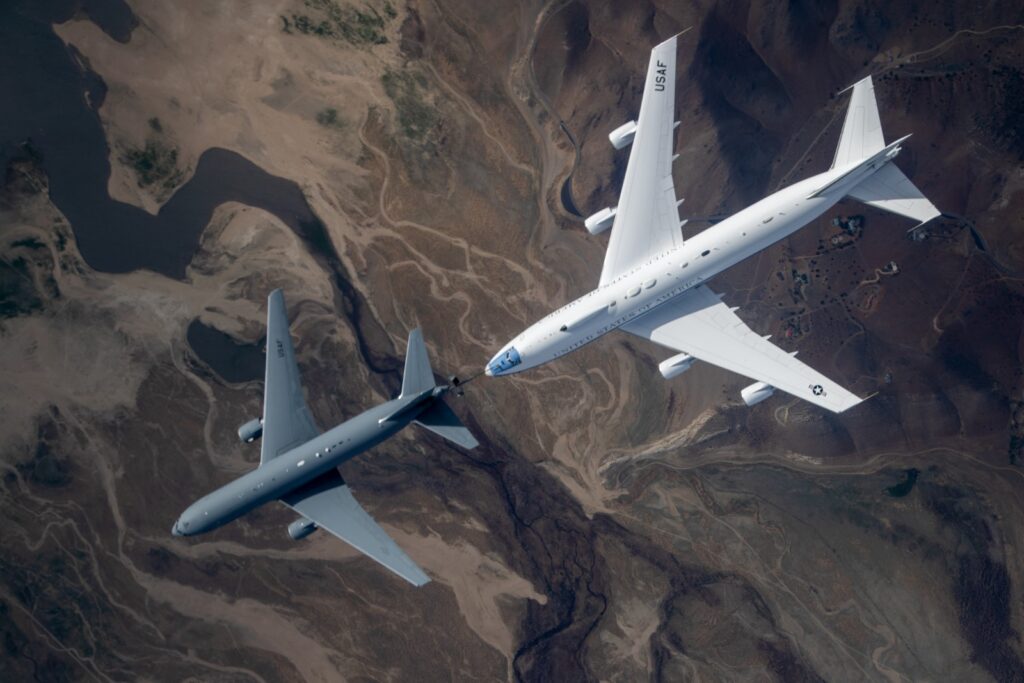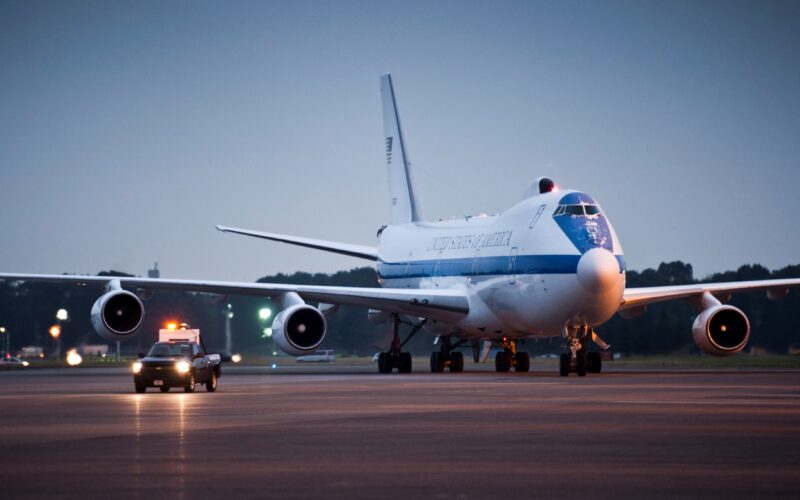The United State Air Force is seeking to replace its aging E-4B National Airborne Operations Center with a more advanced and sophisticated system.
To achieve this goal, it has requested $889 million from the Fiscal Year 2024 defense budget to develop a Survivable Airborne Operations Center (SAOC), a significant increase from the $98 million it received for this effort in the previous fiscal year.
“Among numerous important actions that bolster our combat credibility in the short term, this budget makes the Department’s largest-ever investments in readiness and procurement – and our largest investment in research and development,” Lloyd James Austin III, Secretary of Defense, explained. “This year’s budget also increases funding to continue modernizing all three legs of our nuclear triad to maintain a safe, secure, and effective strategic deterrent against advanced and persistent threats around the world.”
What is the E-4 Nightwatch?
The E-4 Nightwatch is a militarized Boeing 747-200, much like the two famous VC-25A used as the United States presidential plane. The aircraft is a real war room in the sky developed in the aftermath of the Cuban missile crisis. It is designed to provide the President, the Secretary of Defense, and other high-ranking officials with a secure means of communicating with military forces worldwide in the event of a national emergency.
Four E-4Bs are currently in operation within the 1st Airborne Command Control Squadron, part of the 595th Command and Control Group housed at Offutt Air Force Base, Nebraska, where they stay on high alert, 24/7.
The E-4 features advanced communication systems, including a satellite communication system and an Airborne Very Low Frequency (AVLF) system that allows talking with immersed submarines. Its avionics are protected against electromagnetic interference such as those produced by a nuclear explosion. In the same vein, its cabin is totally isolated from all external radiation, earning it the nickname “Doomsday Plane.” Since the upgrade to the B standard in the 1980s, it can be refueled during flight, extending its autonomy to 72 hours.

Finding a new “Flying Pentagon”
However, these upgrades can only go so far, and the E-4Bs are now approaching the end of their operational lives. Since at least 2020, the USAF has been considering its option to replace the Doomsday fleet. But the program has encountered numerous delays, partly because of the COVID-19 pandemic.
In June 2022, a representative of the House Armed Services subcommittee on strategic forces voiced the concerns of lawmakers.
“This is a continuing concern based off of how long it’s taken to get a replacement program on record,” the official told Air & Space Forces Magazine. “So, at this point, we’re concerned about how long the NAOC is going to be able to hold on and when the SAOC is actually going to be up and in place.”
Of the $203 million requested by the USAF in the Fiscal Year 2023 defense budget, only $98 million were earmarked. The $889 million now requested by the air force would likely give a much-needed boost for the replacement of the 50-year-old aircraft.

